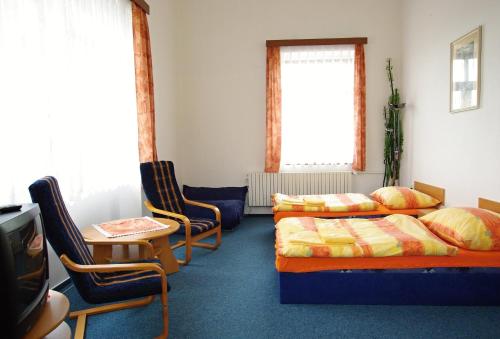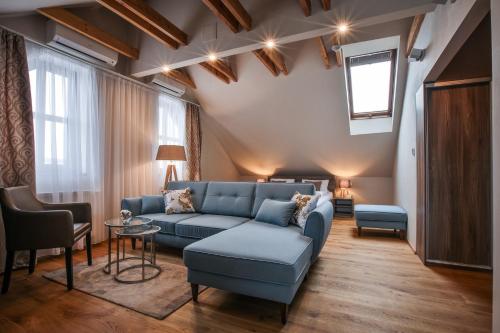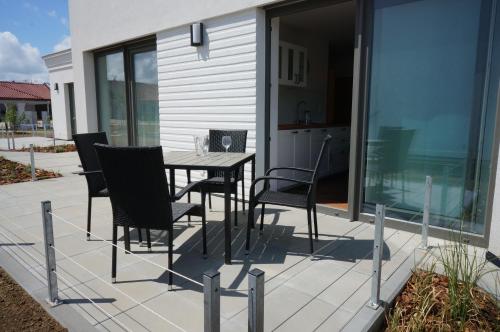I’m sure you’ve heard about the small European country of Liechtenstein. (If you haven’t, you might like to read some of my stories about Liechtenstein here.)
But perhaps you’re like me and don’t really know much about its history. Well, I want to tell you an interesting tale about it – although this tale is actually mainly about the Czech Republic – and, specifically, about a place called Lednice-Valtice.
Wait, what? Didn’t you say this was about Liechtenstein, I hear you ask.
Well, the two countries are more intertwined than perhaps you realise. Let me explain.
It all starts with the House of Liechtenstein, a rich and powerful dynasty that first emerged in Austria in the 12th century. Over the centuries, they expanded their sphere of influence until they controlled a lot of land across an area that is in present-day Austria and the Czech Republic.
The thing is, though, that although they controlled a lot of land, they didn’t technically own most of it. But by the 1600s, you needed to own the land to be a part of the ruling elite in Europe.
So, the Liechtensteins bought two small adjoining bits of land – Schellenberg in 1699 and Vaduz in 1712.
In 1719, the Holy Roman Emperor, Charles VI, declared those two areas should be combined and be known as Liechtenstein, and the family was now officially a part of the empire.
I tell you all of this as a way of background because it’s important to realise that the senior members of the dynasty apparently didn’t even set foot in their new principality for decades.
It wasn’t where they were from and they had little interest in it – the new country was really just a political technicality. They were living the high life in Central Europe.
The main residence of the Liechtenstein family was at Lednice-Valtice, an enormous estate in the modern-day Czech Republic.
It’s about 280 square kilometres in size which, to give you a comparison, is much larger than the whole country of Liechtenstein, which is only 160 square kilometres.
Lednice-Valtice is made up of two main centre – Lednice and Valtice. They both have enormous palaces but, aside from that fact, have very different atmospheres.
However, there’s a consistent feel to the vast parklands that surround and connect them.
A long avenue goes directly between the two and passes lakes, forests, landscaped grasslands and smaller (but still grand) buildings.
I’ll tell you a bit more about what you can see there in a second, but let’s just briefly go back to the history because it’s important… and is still relevant today.
The Liechtenstein dynasty was still living at Lednice-Valtice right up to the 1900s, until the outbreak of the Second World War.
The family refused to support the Nazis and so the fascists confiscated the palaces and grounds in 1939 and threw the Liechtensteins out. When the war came to an end, the area became part of Czechoslovakia.
Although the family asked for the estate to be returned, the communist government refused. When that government collapsed and the new Czech Republic came into being in 1992, the Liechtensteins again asked for their estate back. Again, they were rejected.
This has set up a lot of legal action and the issue is still not fully resolved… although there have been some recent developments.
You can see why the family would want Lednice-Valtice back. It is a beautifully sprawling property that combines some of the most stunning castles in Central Europe with a natural playground that at times seems magical in its intricacy and, at others, like an untamed wilderness.
Lednice
I begin my exploration at Lednice. The huge palace dominates everything and, until you’re quite far away, you can’t see it all at once.
It was originally a Renaissance villa, then became a Baroque estate house, and finally was renovated as a Neo-Gothic palace in the mid-1800s.
Although the buildings should probably be the focus, I find myself drawn to the gardens instead.
Immediately adjacent to the palace is an extensive area with carefully designed flower beds and rows of hedges, intermixed with statues and fountains. But behind the palace, stretching out into the distance, is an absolutely enormous park with a lake at the centre.
The trail around the lake takes me almost an hour to walk. Along the way are little treasures to discover – buildings appear out of nowhere for no apparent reason – the artificial ruins of a Medieval castle and a sixty-metre-high minaret, for instance.
Visiting Lednice Palace
Lednice Palace is large and you can only go inside on a guided tour. To make things a bit complicated, there isn’t a single main tour – there are a few options that you have to choose from.
The most popular option is the Representative Rooms tour, which takes you through halls on the ground floor that would’ve been used for receptions and other formal events. These include the Hunting Room, the Chinese Room, and the Blue Dancing Hall.
The other popular option is the Private Princely Apartments tour, which goes through rooms on the first floor that were used as residences and for more private functions, including bedrooms and the Chapel of St Jacob the Elder.
Some of the other tours that can you join are:
- Children’s Room & Museum of Marionettes: Areas like the playroom, study room, and lounges of the children, plus a museum with the country’s largest private collection of historical puppets.
- Grotta -Artificial Baroque Cave: An artificial cave with stalactites in the castle’s cellar, along with some of the technical rooms.
- Minaret Halls: Eight newly restored halls on the first floor of the Turkish-style minaret that was built in the park.
- John’s Castle: A hunting lodge that was built in the forest in 1801 and was used for preparations before a hunt and celebrations afterwards.
These tours have limited numbers and can fill up in the busy months, so I would recommend booking in advance, which you can do up to 24 hours before the tour.
There are also two parts of the palace complex that you need to pay to see but can do anytime without a tour – the Greenhouse in the garden in front of the palace, and the Minaret that is within the park.
Where is Lednice Palace?
The Lednice Palace, also known as Lednice Castle, is located in the beautiful South Moravian countryside near the border with Austria. It’s situated in the city of Lednice, which is in the South Moravian region of the Czech Republic. It’s around 56 km southeast of Brno.
The official address is Zámek 1, 691 44 Lednice na Moravě, Czechia.
You can see it on a map here.
How do you get to Lednice Palace?
By car, it’s an easy drive from Prague (2.5 hours) or from Brno (40 mins). There’s a parking area just 300 metres from the palace.
To get to Lednice Palace by public transportation, catch the train to Břeclav station. From there, catch bus number 570, which runs hourly to Lednice.
When is Lednice Palace open?
Lednice Palace is open at these times:
February and March: Only Saturday/Sunday from 10:00 – 16:00
April and October: Saturdays, Sundays and public holidays from 09:00 – 16:00
May, June and September: 09:00 – 17:00, closed on Monday.
July and August: 09:00 – 17:00 daily
What is the Lednice Palace entrance fee?
The standard ticket for either the ‘Representative Rooms’ tour or the ‘Private Princely Apartments’ tour is 300 CZK (US$12.60) each.
Concession is 240 CZK (US$10.10), and for children 6-17 years old is 90 CZK (USD3.80). Children up to 5 years old are free.
Tours to other parts of the palace are also available and have different entrance fees.
You can find more information on the palace’s official website.
Remember, as well as the palace itself, there are trails that you can walk or cycle that go through the gardens and parks of Lednice. I would suggest wearing good shoes, even if you’re just going to wander along some of it.
Within the town of Lednice itself, there are quite a few other attractions to see, if you’re interested, including the Lednice Toy Museum, the Museum of Torture, and a history museum.
There are also lots of places to eat in Lednice, including Restaurant U Tlustých, U Lukášků, and Moravská Búda.
Valtice
I walk along the long road from Lednice to Valtice. It’s about 7 kilometres and takes me more than an hour (there is a bus that connects the two that I probably should have taken).
Arriving in Valtice, I can see the difference immediately. This feels like a town… because it is one.
The outskirts are like any small town, with rows of houses, an industrial zone, a shopping centre.
It’s only when you get to the centre that the huge palace makes it seem special.
Compared to the previous one, this palace feels more like a castle. It’s built on a hill and has large walls for fortification around it.
The design is clearly Baroque and has a central square within its borders, which the building surrounds. The urban development around Valtice Castle means it doesn’t have the same rural or garden feel.
Visiting Valtice Palace
Although you can freely walk into the grounds of Valtice Palace, you need to join a guided tour to go to most of the interior areas.
The most popular tour option is the Grand Representation tour. It takes about 50 minutes and goes through more than 20 rooms, including reception halls and the private chambers of the princes.
Another option worth considering is the Princely Apartment: Franz I of Liechtenstein tour, which takes you through ten rooms on the first floor that have been newly renovated and weren’t previously open to the public.
These tours have limited numbers and can fill up in the busy months, so I would recommend booking in advance.
There are also some shorter tours that you could choose to do instead or to add to your visit to Valtice Palace:
- Castle Chapel: One of the most beautiful chapels in Moravia, this Baroque treasure was built in 1726.
- Baroque Palace Theatre: With a remarkable renovation in 2014, the theatre is now a wonder to behold again, with access to the stage and the production areas behind the scenes.
- Diana’s Temple Rendez-vous: Outside the main castle complex, the building is shaped like a triumphal arch and was a meeting place during hunting trips.
- Castle Cellar: Dating from 1430, it’s one of the oldest and largest wine cellars in the Czech Republic. There are different tour options depending on what you want to taste.
As well as the guided tours at Valtice Palace, you can pay an entrance fee to see a few other areas including the Herb Garden, the Riestna Colonnade, and an exhibition about historic mysteries called Tajuplný Svět.
A few other useful bits of visitor information:
- Wheelchair access is available to the premises on the ground floor of the castle.
- Pets with leash are allowed to enter the surroundings of the castle but not allowed on any guided tours or in exhibitions.
- There is a bike shed in front of the castle where you can leave your bicycle for a fee of 10 CZK.
Although it’s not as large as the one at Lednice, there is also a park attached to Valtice Palace that you can walk around.
Where is Valtice Palace?
The Valtice Palace, also known as Valtice Castle, is located in the town of Valtice, in the South Moravian region of the Czech Republic. Specifically, it’s situated at Zámek 1, Valtice, Jihomoravský, 691421.
You can see it on a map here.
How do you get to Valtice Palace?
By car, it’s an easy drive from Prague (2.5 hours) or from Brno (40 mins). There are quite a few parking areas in Valtice village.
To get to Valtice Palace by public transportation, catch the train to Břeclav station. From there, change to another train to Valtice.
When is Valtice Palace open?
Each part of Valtice operates on its own timetable. Typically, it opens at 9:00 and closes between 16:00 and 17:00, varying with the seasons.
The main Grand Representation tour operates at the following times:
March – April: 9:00 – 16:00, closed Monday
May – September: 9:00 – 17:00 daily
October: 9:00 – 16:00, closed Monday
1 November – 10 November: 9:00 – 14:00, closed Monday
11 November – 16 March: Closed
What is the Valtice Palace entrance fee?
Each part of Valtice has its own cost of entrance tickets.
The main Grand Representation tour is 260 CZK (US$10.90) for a standard ticket, 210 CZK (US$8.80) for concession, and 80 CZK (US$3.35) for children aged 6-17.
The Princely Apartment tour is 160 CZK (US$6.70) for a standard ticket, 130 CZK (US$5.45) for concession, and 50 CZK (US$2.10) for children aged 6-17.
You can find more information at the palace’s official website.
If you have time, you might also like to explore Valtice town. There are a few interesting things to see here including the Megabugs exhibition, Neptune’s Fountain, the Museum of the Iron Curtain, and the National Museum of Agriculture.
There are also some good places to eat in the palace area, including Restaurace Zahradka, Chokolito, Vinotéka na zámku, and Restaurace Zlatá Terasa.
The two palaces together, with the parklands, are one of the jewels in the heritage collection of the Czech Republic. It’s obvious why they wouldn’t want to give the estate back to the Liechtenstein family.
But there is something a bit dodgy about how this has all come about.
Sure, land has been stolen and kept for centuries all across Europe and borders have constantly been redrawn. But this just seems a little too recent and unnecessary to seem fair.
There have been tensions, to say the least, ever since the original owners were thrown off their land.
It wasn’t until 2009 that there was a historic agreement when the two countries of the Czech Republic and Liechtenstein formally began diplomatic relations.
Liechtenstein was the last country in Europe to officially recognise the Czech Republic and it was all about the dispute over Lednice-Valtice (and a few other properties, I should add).
It seems like Liechtenstein may finally have given up. Publicly, at least, it says it will not fight for the property to be handed back.
However, it does also make the point that it would gladly have it back… but maybe after 60 years of fighting, it’s time to just get along.
THE BEST ACCOMMODATION IN LEDNICE-VALTICE
The largest nearby city is Brno and you may find it more convenient to stay there. However, there are some wonderful places in Lednice and Valtice, if you prefer.
BACKPACKER

If you’re looking for a comfortable budget option, I would suggest Koleje Zamecek.
BUDGET
For an affordable historic hotel, Hotel Salety has an amazing location.
BOUTIQUE

For something a little special, I would recommend staying at HARDY – Cognac & Pension.
APARTMENT

Or you could really stretch out at the modern and comfortable Apartment B4 Nepraš.